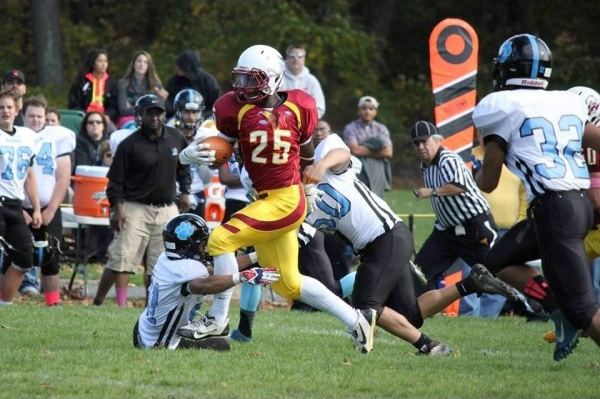There are tens of millions of potential users for the TMCAMS diagnostic technology in America alone and growing daily. The US population is increasing and is estimated to grow at a rate of 20% to 363 million people between the years 2008 and 2030. While TMCAMS technology can be used for preventative care as well as diagnostic medical care by any person in any market, the following key market verticals represent key targets for TMCAMs:
A growing fashion benefiting from health & wellness promotions from insurance companies and in business environments. – benefits the members by tracking the progress of their wellness programs as well as providing advance warning of potentially dangerous health issues – benefits the club by providing an added revenue generating service as well as the attending physicians and resident PA’s by maximizing their use of billable time. Improve success rates with custom tailored exercise programs to a patient's specific physiology and clinical history.

A rapidly growing demographic target with a high percentage of patients with chronic disease. – benefits the residents by identifying early health warnings and monitoring the status of existing chronic diseases – benefits the facilities as an added revenue generating service as well as the attending physicians and resident PA’s by maximizing their use of billable time – helps to reduce medication-load, reduce hospitalizations and re- hospitalizations, thereby reducing overall healthcare costs for all while improving patient outcomes and quality of life.

A market that ANSAR has already successfully penetrated with the sale of ANSAR software licenses to over 1200 Cardiologists, Neurologists and other medical specialists. – Provides the care giver with enhanced data that improves the accuracy of a diagnosis and treatment. This added efficiency not only helps the patient but is also a boost to the revenue of the care giver. Most people go seemingly symptom free for years (e.g., hypertension is considered the “silent killer”, PTSD has an up to three year onset latency)… ultimately until it is too late. Testing can provide useful information that can prevent such damaging trauma later.

A cost driven initiative in the sports field to identify and diagnose health issues in athletes that may have long term or mortal implications with potential liabilities. – provides a regular service to the coaching staff by regularly monitoring an athlete’s vital signs as well as highlighting potential problem areas (e.g., concussion and hypertrophic cardiomyopathy) before critical problems occur – this reduces the risk of potential liability to the institution while helping the wellbeing of the athletes.

An efficiency and diagnostic improvement that increases the productivity of the healthcare provider’s time while improving the accuracy of a patient’s records by automatically recording and maintaining digital records – P&S testing is a highly beneficial add-on revenue service for the profitability and competitiveness of any clinic.
PTSD is known to have an, up to, three year onset latency (the time between the trauma and the presentation of symptoms). This is one of the reasons why it is sometimes hard to believe the patient, because it is hard to connect the two. The reason for this is that a job of the P&S nervous systems is to maintain normal organ function, even when they, themselves, are dysfunctional. Since symptoms do not present until the organs become dysfunctional, the patient (illness) seems to be symptom free. PTSD typically includes symptoms of Anxiety.
Due to P&S testing, we have discovered four physiologic reasons for Anxiety-like symptoms, in addition to the psychologic reasons for Anxiety. If you think of your car, it has an accelerator and a brake. Your body is similar. The accelerator is the Sympathetic system that speeds things up, and the brake is the Parasympathetic system. One type of Anxiety is like your accelerator is working too fast over-revving your engine leading to cardiac arrhythmias causing inefficient blood flow to the brain, leading to an under perfused (or hypo-perfused) brain, causing the brain to initiate “adrenaline storms,” potentially causing the Anxiety. The adrenaline storms add to the “over-revving” of the engine. A second type is like you riding your brakes, slowing blood flow to the brain, leading to an under perfused (or hypo-perfused) brain, causing the brain to initiate “adrenaline storms,” therreby forcing you to over-rev your engine to get going, potentially leading to Anxiety. The third and fourth physiologic causes of Anxiety-like symptoms are due to gravity. Your P&S nervous systems are supposed to coordinate in a certain way to keep blood flowing to your brain when you stand and as long as you stand. If they do not your brain does not get enough blood and sends an “adrenaline storm” calling for more blood. Depending on which is the case for you (orthostatic dysfunction or syncope), we will determine the appropriate therapy; thereby relieve the problems causing reduced blood flow to the brain, reducing the need for adrenaline storms, relieving Anxiety.
The heart is a muscle. Like the commercials state, every muscle in the body is controlled by a nerve. The heart, albeit a special muscle, is still a muscle and is controlled by nerves. Two nerves in fact: the P&S nerves. All other heart tests only test the muscle (echo for the mechanical function of the heart muscle and EKG for the electrical function of the heart muscle). The “third leg of the stool” is the nervous input to the heart. Your heart may be totally healthy and the nerves are simply telling it to do the wrong thing or the right thing, but at the wrong time. P&S testing provides more information to determine if the heart muscle is being controlled properly.
Diabetes, abnormal blood sugar levels or frequent blood sugar swings, causes autonomic dysfunction which accelerates the progression of the disease and causes many of the secondary disorders associated with the disease. Untreated, diabetes reduces autonomic function, as compared with normal subjects, by up to 80% before symptoms present. Through diet, exercise, and therapy, a proper P&S balance may be established and maintained to slow the progression of the disease and help to maintain a more normal quality of life (proper GI function, sleep patterns, and cognitive and sex function, and no dizziness or depression) and longevity (minimize morbidity and mortality risk, respectively).
From young athletes to professional athletes, the need to track the health of these people has become more and more important. Young athletes from a very young age are being exposed to physical trauma especially head injuries that left undetected can lead to more serious problems when they age. Professional athletes are being subject to these traumas leading to dementia and other long term problems (e.g., Traumatic Brain Injury and Second-Impact Syndrome) which if detected earlier could help with the healing process and reduce the long term effects. A concussion, more specifically a traumatic brain injury, is caused by a deceleration event and includes the rebound injury. As a result, the brain swells. This compresses the brain stem, including the major autonomic centers. This causes secondary symptoms, including nausea, dizziness, sleep difficulties, depression/anxiety, respiratory disorder, heart palpitations, and bowel disturbances. As the brain heals, many of these disorders should be relieved. However, if the brainstem compression is not relieved sufficiently or timely, a high mortality risk (e.g., heart attack or pulmonary failure) remains, typically undetected. P&S testing provides more information, differentiating the acute from the chronic phases of concussion and documents any residual autonomic neuropathy and associated morbidity and mortality risk